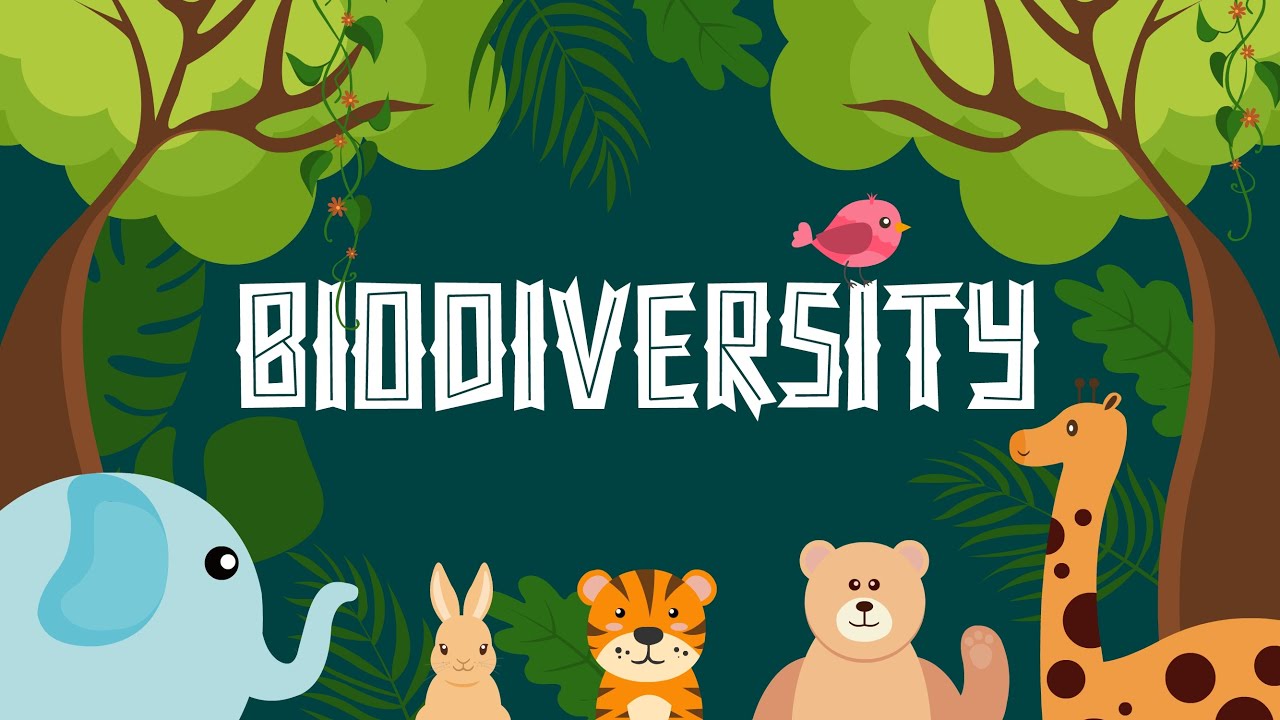Lesson 13: Biodiversity
Summary
TLDRThis educational video delves into the critical concept of biodiversity, explaining its significance for all life on Earth. It outlines the three levels of biodiversity: genetic, species, and ecosystem diversity, each playing a crucial role in maintaining ecological balance. The video underscores the economic, ecological, and intrinsic values of biodiversity and discusses various conservation strategies, including soil, water, habitat, and wildlife conservation, emphasizing the need to protect our natural world for future generations.
Takeaways
- 🌿 Biodiversity encompasses all types of life, including plants, animals, fungi, and microorganisms, and the complex interactions within ecosystems.
- 🔬 Biodiversity is crucial for maintaining ecological balance and supporting life on Earth.
- 🌱 Genetic diversity is about the variety of genetic traits within a species, which is vital for the health and adaptability of populations.
- 🐘 Species diversity refers to the number and abundance of different species in a given area, contributing to the richness and evenness of life forms.
- 🌳 Ecosystem biodiversity highlights the variety of ecosystems, such as forests, grasslands, and oceans, each hosting a unique array of species and genetic diversity.
- 💡 Biodiversity has intrinsic value, meaning each species has a right to exist, beyond its utility to humans.
- 🌱 Biodiversity provides essential ecosystem services like oxygen production, water purification, and pollination, which are vital for human survival.
- 🌐 Economically, biodiversity offers resources for consumption and production, supporting livelihoods in agriculture, fishing, and forestry.
- 🌱 Conservation efforts for biodiversity include soil, water, habitat, and wildlife conservation to protect against erosion, pollution, and habitat destruction.
- 🚫 Threats to wildlife include illegal trade, habitat destruction, invasive species, pollution, and climate change, which necessitate proactive conservation strategies.
- 🌟 Protecting biodiversity is essential for the health of our planet and the well-being of future generations.
Q & A
What is biodiversity and why is it important?
-Biodiversity refers to the variety of life found on Earth, including plants, animals, fungi, and microorganisms, as well as the communities they form and the habitats they live in. It is important for maintaining the balance of ecosystems and supports life by providing various services such as oxygen, clean air and water, pollination, and pest control.
What are the three types of biodiversity?
-The three types of biodiversity are genetic diversity, species diversity, and ecosystem diversity. Genetic diversity refers to the genetic variation within a species, species diversity is the number of different species in a particular area, and ecosystem diversity is the variety of ecosystems in a certain area.
Why is genetic diversity important for a species?
-Genetic diversity is crucial for a species because it helps maintain the health of a population by including alleles that may be valuable in resisting diseases, pests, and other environmental stresses. It allows populations to evolve and adapt to changes in their environment.
What is species richness and how does it differ from species evenness?
-Species richness refers to the number of different kinds of species in a particular area. Species evenness, on the other hand, refers to the abundance of individual members within a particular species. Both are measures of species diversity.
Where is species richness greatest on Earth?
-Species richness is greatest in tropical ecosystems, such as tropical rainforests on land and coral reefs in marine systems, which are among the most biologically diverse ecosystems on Earth.
How does biodiversity provide economic benefits to humans?
-Biodiversity provides humans with raw materials for consumption and production, supports livelihoods such as those of farmers, fishers, and timber workers, and contributes to the tourism industry by attracting visitors interested in unique wildlife and ecosystems.
What are the four types of biodiversity conservation mentioned in the script?
-The four types of biodiversity conservation mentioned are soil conservation, water conservation, habitat conservation, and wildlife conservation. Each focuses on protecting different aspects of the environment to maintain biodiversity.
Why is soil conservation important and what are its causes?
-Soil conservation is important to prevent the loss of the topmost layer of soil from erosion and to maintain soil fertility. Causes of land and soil pollution include poor agricultural practices, improper solid waste management, and the unsafe storage of hazardous chemicals.
How does water conservation relate to biodiversity?
-Water conservation is essential for maintaining biodiversity because it helps preserve the limited supply of fresh, clean water that many species depend on for survival. Water pollution from untreated waste can harm aquatic ecosystems and the species within them.
What is habitat conservation and why is it necessary?
-Habitat conservation is the management practice that seeks to conserve, protect, and restore habitats to prevent species extinction and habitat destruction. It is necessary because habitat destruction is the primary cause of species extinction worldwide.
What are the threats to wildlife mentioned in the script?
-The threats to wildlife mentioned in the script include illegal wildlife trade, habitat destruction, invasive species, pollution, and climate change. These threats can disrupt ecosystems and lead to the decline or extinction of species.
Outlines

This section is available to paid users only. Please upgrade to access this part.
Upgrade NowMindmap

This section is available to paid users only. Please upgrade to access this part.
Upgrade NowKeywords

This section is available to paid users only. Please upgrade to access this part.
Upgrade NowHighlights

This section is available to paid users only. Please upgrade to access this part.
Upgrade NowTranscripts

This section is available to paid users only. Please upgrade to access this part.
Upgrade NowBrowse More Related Video

Biodiversity-Definition, Types Of Biodiversity, Importance of Biodiversity

What Is Biodiversity? - Definition, Types And Importance - Biological diversity - Learning Junction

Biodiversity: Richness, Evenness, and Importance

Biodiversidade - Documentário

Mengapa Evolusi?

Class 11 Biology | Chapter 1 | The Living World | Full Chapter | Home Revise
5.0 / 5 (0 votes)